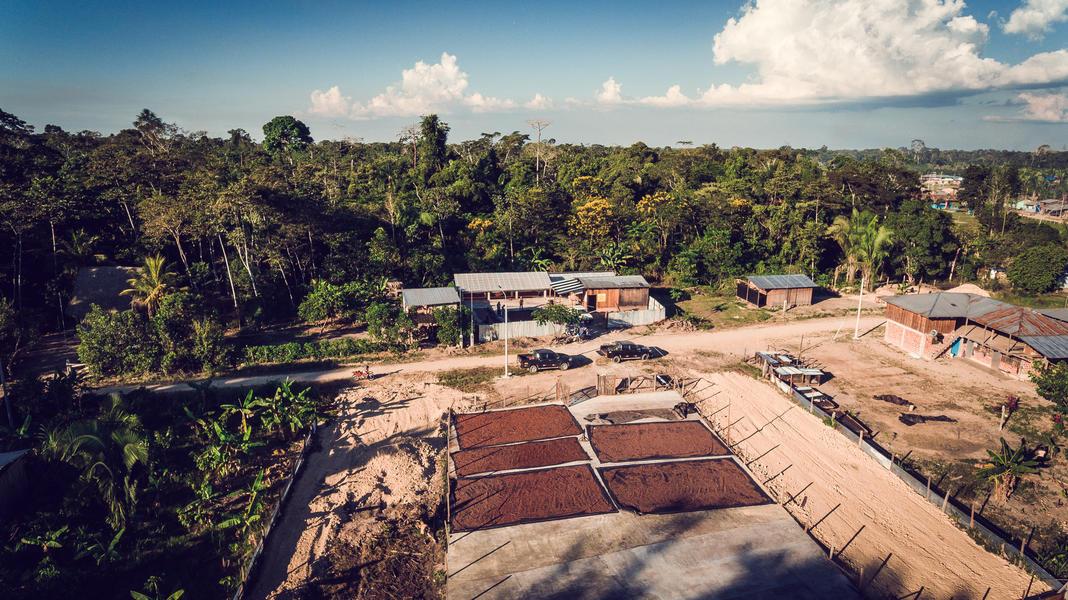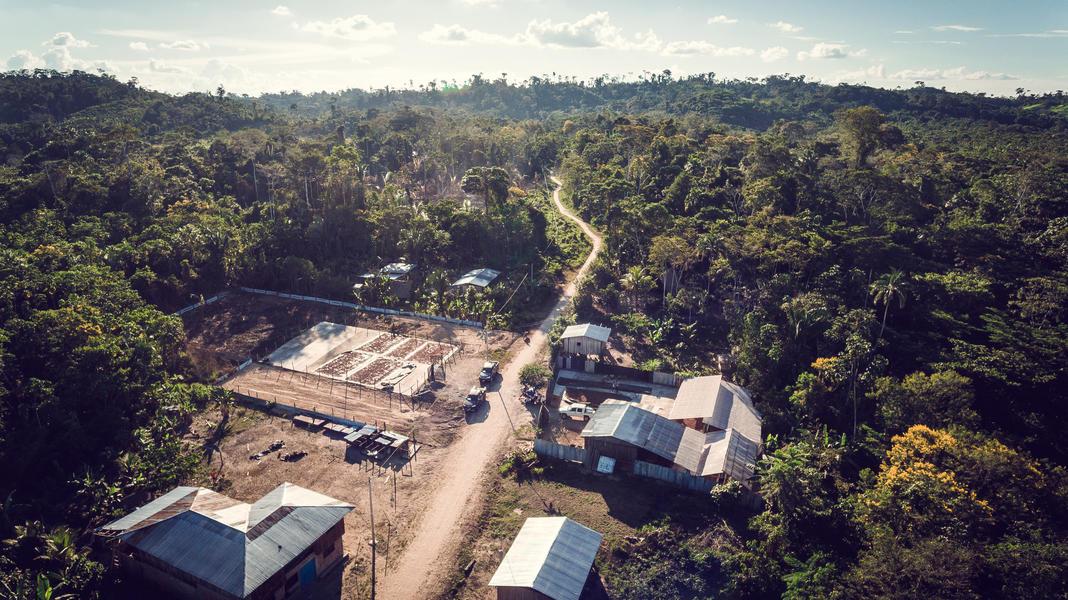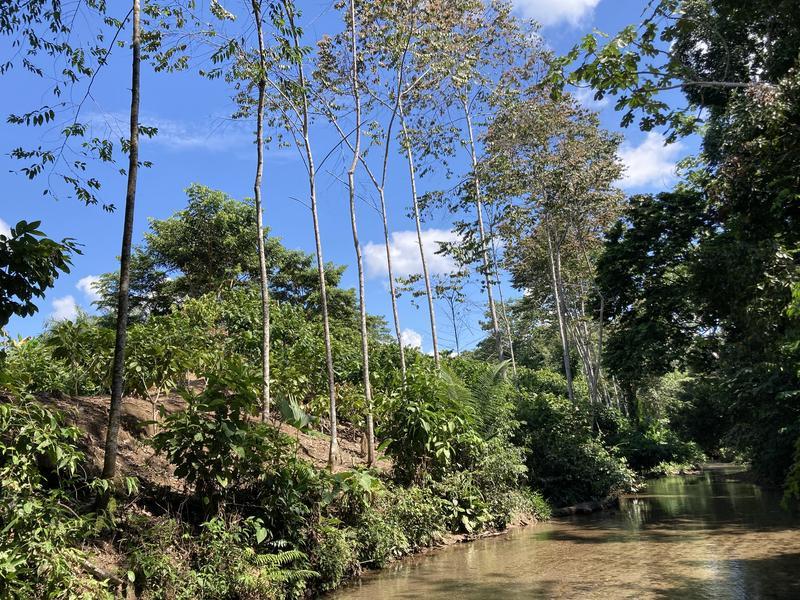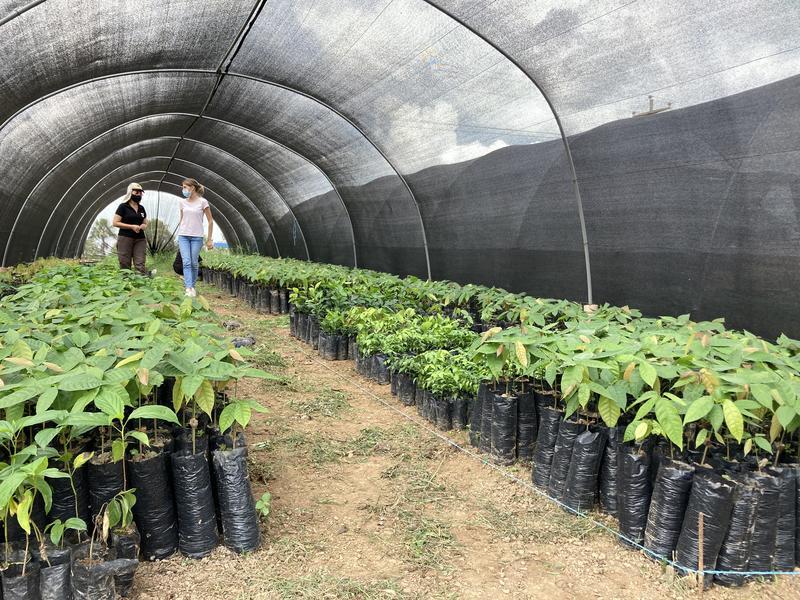Blog Business, researchers, farmers, NGOs and governments team up for sustainable cacao in South America
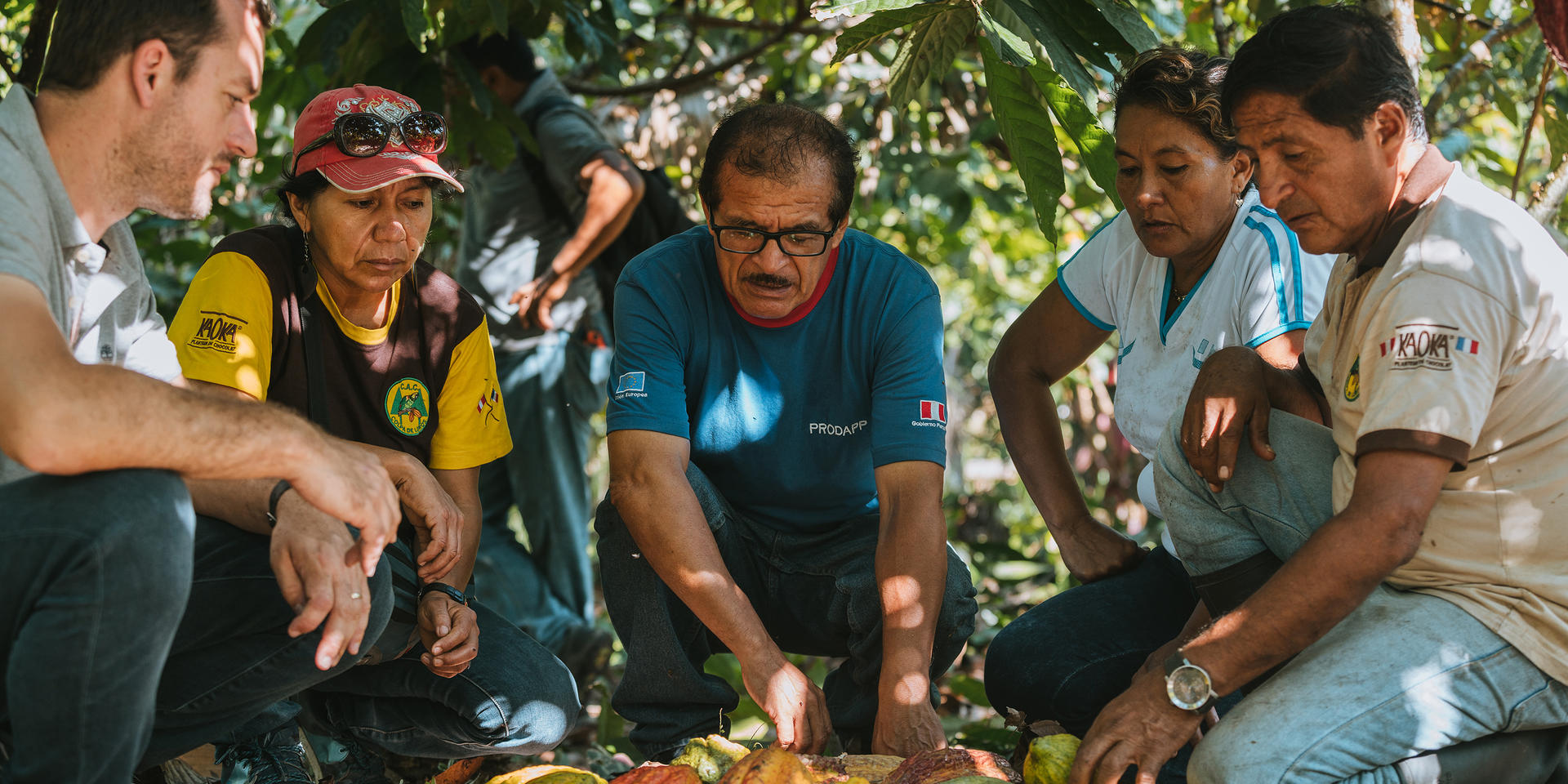
The Agroecological Regenerative Cocoa (ARC) project, which involves CGIAR centers, Conservation International, a French chocolate company, governments and farmer organizations, aims to transform hundreds of hectares of quality cacao production in Colombia, Ecuador and Peru
As the ancestral home of cacao, South America’s northern Andes is where the world looks for some of its finest chocolate ingredients. The great diversity of cacao tree varieties in the region leads to an abundance of distinct flavors and aromas that are sought after by luxury chocolatiers. Unfortunately, the region is facing substantial deforestation and land degradation pressure, and, as a shade-grown tree, Theobroma cacao is losing its natural habitat.
A new project led by the Alliance of Bioversity International and CIAT aims to contribute to the creation of sustainable cocoa systems that provide livelihoods for farmers, conserve forests and create – through land restoration, rehabilitation and transformation – 600 hectares of cacao farms in Colombia, Ecuador and Peru. The establishment of agroforestry systems with fine-flavored cacao varieties that can contribute to ecosystem connectivity is a central project priority.
Across the three countries, 925 producers, their families and three cooperatives will be involved in the project.
“This is part of the Alliance’s implementation of projects across Latin America that focus on cacao and climate change,” said CGIAR researcher Yovita Ivanova, the project coordinator. “We are leading research on sustainable production, deforestation-free value chains, participatory agroforestry and sustainable business models.”
The project has four objectives:
- To develop an integrated farming vision, through agroforestry cocoa farming systems (SAF), which includes production aspects as much as production, soil restoration or landscape conservation
- To strengthen the infrastructure and skills of producers and their organizations throughout the cocoa value chain, from production to final commercialization
- To create and implement instruments for impact analysis and monitoring of productive landscapes in the project's area of influence through community governance
- To capitalize on experiences and lessons learned on sustainable agricultural practices and the conservation of biodiversity and forest ecosystems
French chocolate company Kaoka, the French Facility for Global Environment and project partners are funding the almost 9-million euro, five-year project. The CGIAR’s World Agroforestry (ICRAF), Conservation International and other NGOs, and cacao farmers’ cooperatives in the three Andean nations are key collaborators.
The Alliance’s work will initially focus on mapping priority areas for conservation and ecological connectivity with the support of Geographic Information System (GIS) specialists. The Alliance will tap into its networks across the region that collaborate on other cacao projects to work with the cooperatives who will lead restoration and conservation efforts. Additionally, Alliance specialists will focus on integrating and developing low-emission agriculture practices into the project areas, as well as monitoring for deforestation.
Ivanova said ARC dovetails nicely with several other CGIAR projects in the region, including Clima-LoCa, which is working on climate and cadmium issues in cacao production, SERVIR-Amazonia, which empowers communities in the Amazon with geospatial data, and the multifaceted Fine Flavor Cacao Project in Peru.

Landscape approach provides distinction between wooded areas and cultivation areas. We see the importance of creating biodiversity corridors to link the wooded areas.
Growing sustainably
The Colpa de Loros cooperative in Peru has worked with Kaoka since 2015, starting with 35 farmers. Today, the organization has more than 500 members who have integrated agroforestry into their systems to limit deforestation tied to cacao farming. But more needs to be done.
“New techniques have to be implemented, in particular in regards to the restoration of degraded soils and ecological corridors,” said Ernesto Parra y Guerra, Colpa de Loro’s director. “This project is going to provide us with a strong support that will help us to consolidate our methods and improve our living conditions.”
Experts from ICRAF, Conservation International and Kaoka, which has a cacao plantation regeneration project in the region, will spearhead the establishment of new agroforestry cacao farms. These will include replacing old plantations and establishing new ones on deforested land.
Among its many benefits, agroforestry reduces needs for inputs such as fertilizer and integrates a variety of subsistence and cash crops including fruit trees, vegetables and timber trees. When done correctly, agroforestry can restore degraded soils and landscapes, decrease deforestation pressure, and restore habitat lost to slash-and-burn agriculture.
Underpinning the project is demand by European consumers, regulators and chocolate producers to source fair-trade cacao from deforestation-free landscapes. Partners expect the 600-hectare pilot to spur further sustainable development of cacao systems in Latin America. This is tied to France’s 2018 National Strategy to Combat Imported Deforestation (SNDI), which has four main components: traceability of product sources, the commitment of major companies, a public information platform and a public procurement policy.
Ivanova said three aspects of the ARC project make it especially innovative: the generation of applied science by the Alliance, direct contribution to the SNDI, and collaboration with the private sector.
“The development of agricultural holding areas in Colombia, Ecuador and Peru in the cacao farming industry is a perfect demonstration of what it is possible to achieve at the provincial, national, regional and international level, in particular because it is so easily transferable,” said Anaëlle Cado, a project manager with FFEM. “Another important component [is that] the communities are stakeholders of this project, which directly speaks to the prevailing socio-economic patterns of the region, and thus guarantees its social and cultural acceptance.”
